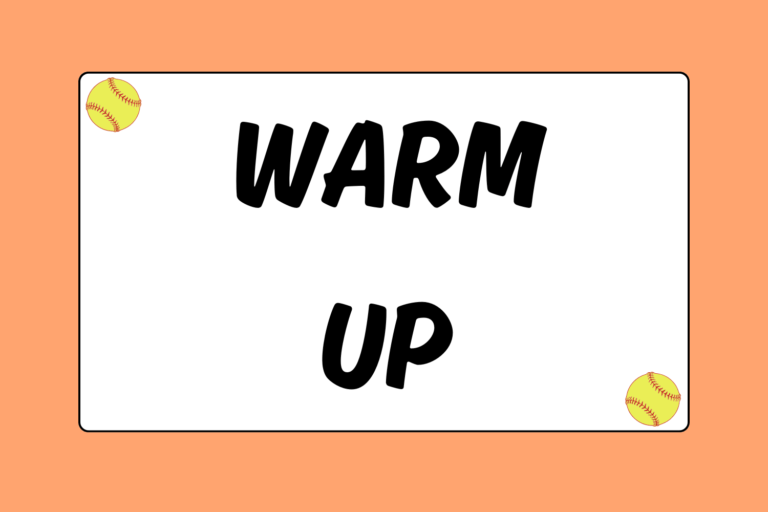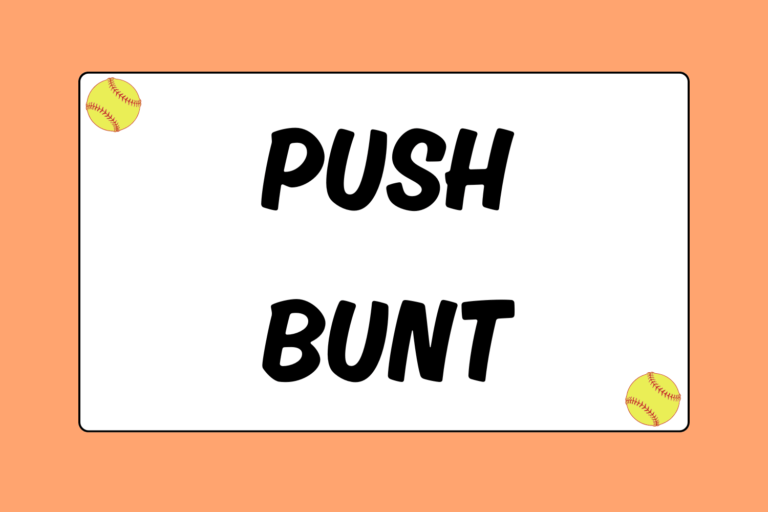Being able to keep score is a skill everyone involved with softball should learn. Whether done by a parent volunteer or a player in the dugout, knowing how to keep score is absolutely crucial. This softball guide will go over the basics of how to keep score in softball.
The Basics
Before the first pitch is thrown, make sure you have the following information completely filled out on the scorecard:
- Name of the home team
- Name of the away team
- Name of the field
- The date
- The umpires’ names
- The predicted start time (which you will need to change if the game is delayed)
- The lineup for both teams.
The Lineup
Filling out the lineup for both teams is important because you always need to know the order in which the girls are batting. Each team will typically have their own page (one team on each side of the scorecard). The first information you want to enter are the player’s names, positions, and (if a designated spot) their number. If there is no designated spot for players’ numbers, include it on the same line as their name. You will list the players according to the batting order.
Each position is assigned a number from 1-9. It can be tricky to memorize what position each number represents, but it’s important for every person on the team to know them:
- 1: Pitcher (the pitcher is only listed on the line-up if she is hitting; otherwise she will be listed below the nine players who hit).
- 2: Catcher
- 3: First base
- 4: Second base
- 5: Third base
- 6: Shortstop
- 7: Left field
- 8: Center field
- 9: Right field
There are also three other player positions you’ll need to know how to abbreviate if they come into the game:
- Designated hitter: This is a player who only hits for someone who only plays on the field. The designated hitter’s “position” on the scorecard will simply be “DH.”
- Pinch hitter: A pinch hitter is a player who is not in the starting lineup, but is substituted to bat for a player who is in the line-up. Generally, the pinch hitter will only hit once for another player, and remain in the dugout once the defensive inning starts. The pinch hitter’s “position” on the lineup card is “PR.”
- Pitcher: The pitcher should only be included in the lineup if the pitcher hits. Otherwise, the DH will take that spot on the lineup card. There may also be a section on the bottom of the page where you can list the game’s pitchers. If there is such section, write the starting pitcher’s name on the first line.
Each batting order spot usually includes two or three rows. These extra rows are for substitutes. When a player is substituted for, the substituting player’s name is written under the starter’s name on the lineup, and the inning the substitution took place is marked.
Moving through the Scorecard
Now let’s move through the scorecard. Right away, you should know that information gets entered on the card from left to right. We’ve already covered what to put in the first few columns (according to the batting line-up):
- Player’s name
- Player’s numerical position
- Player’s uniform number
After that information, there will generally be a grid that contains between 9-12 columns, all containing a diamond that represent the field. These columns are to be used to track each player’s movement for each inning they’re in the game, starting with the player’s appearance at the plate.
Alongside the diamond, there will usually be five small boxes (two stacked on top, or to the side, of three) in each box. These boxes are to be filled with the batter’s pitch count. The rows track each player in the batting order, and the numbered columns track the progression of events for each inning. Everything that happens in one inning will be recorded in the appropriately numbered column.
For example, let’s say in one inning the lead-off batter hit a single. You would signify this by drawing a thick line along the lower-right side of the diamond, where the first base path would be. Then, on the next pitch, she steals. You would signify this by drawing a thick line along the upper-right side of the diamond (along the second base path). Then, if she scored on a double, you would draw a line along the two remaining sides of the diamond and then shade the entire diamond in to represent a run scored. As for the batter who drove her in, you would draw two lines along the lower- and upper-right side of the diamond to signify the double.
There may also be smaller circles in either of the lower corners of the box. These are used to track outs. If a player made an out, whether at the plate or on the bases, you would write a number (1, 2, or 3) to indicate which out the player made in that inning. If there are no circles on the scorecard, simply make your own by indicating which out the player made and circling it. You can also record how many runs a player drives in (the number of RBI) by using simple tally marks if there is no box designated for this.
Scorekeeping Abbreviations
If you’ve ever seen a scorecard, you’ll notice that space is limited. So, to keep tracking easier, most scorekeepers use a standard set of abbreviations to represent each outcome of a player’s at-bat:
- IB: Single
- 2B: Double
- 3B: Triple
- HR: Home run
- BB: Base on balls (walk)
- IBB: Intentional base on balls
- E: Error
- FC: Fielder’s choice
- K: Strikeout swinging
- Backwards “K”: Strikeout looking
- HBP: Hit by pitch
- CI: Catcher’s interference
- F: Fly out
- L: Line out
- U: Unassisted
- DP: Double play
- SF: Sacrifice fly
- SH: Sacrifice hit (bunt)
- WP: Wild pitch
- PB: Passed ball
- SB: Stolen base
- CS: Caught stealing
For each out, you need to be able to record both how it was made and who made it (on defense). For example, if there was a fly ball hit to right field, you would write “F-9.” Likewise, if the shortstop made an error, you would write “E-6.” It might take some practice, but you’ll get the hang of it!
The same idea goes for ground outs, double plays, rundowns, and any other play where multiple players have touched the ball. You will use a simple dash to track every player who touches the ball during the play. For example, if the second baseman threw the ball to first baseman for the out, you would record that by writing in “4-3.” If there is a rundown, started by the pitcher, who then throws to the third baseman, who throws to the catcher, who then throws to the shortstop, who tags and gets the out, you would write “1-5-2-6.” If there is a play made by a single player, say, a hit to the first baseman, you would simply write “3-U” to indicate that she made the play herself.
When the Last Call is Made
After the last out is called, don’t think you are done quite yet! You still need to go through and total up everything. There will be a grid to enter the game’s final stats, where you will sum up the appropriate information. Your scorecard may be messy, but you’ll be appreciated when you can be counted on to keep an accurate scorecard!





